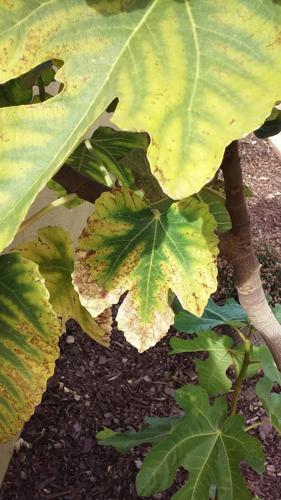Question: I am desperately hoping you can help me. A mother moth laid eggs on my window screen in early November. As of today, surprise, some of them hatched. Tonight is supposed to be freezing and I did not feel comfortable leaving the poor hatchlings on the window screen. Well, now I have these creatures I barely know anything about. I don’t know what to feed them because I did not find them on a plant. What do I feed them? Are they better off on their own? I have them in a small Pyrex container with a stocking stretched over as the lid. I did thinly slice a lantana leaf and put it in there with them, but they are so new I am afraid that they can’t eat the leaf.
Answer: If you can send a photo of the caterpillars, I will see if I recognize them. Since insects have specific diets, it is important to identify them if you want to feed them. If you have any plants nearby, that might help us narrow down which moth laid the eggs. Some insects overwinter in the egg stage but if they hatched in this weather that is a horse of a different color. This generation might have been destined to freeze to death. It’s very possible that these moths had one or more generations in 2016 and this one just had bad timing.
Question: I’ve attached a photo (above) of one of several insect mud homes that are in my hot water heater closet (external door is to outdoors). Is it mud dauber? Any reason to be alarmed?
Answer: Yes, this is a home for mud dauber wasps, aka mud dobber, dirt dauber, dirt digger, etc. No reason to be alarmed unless you spend a lot of time going in that closet. They are relatively docile insects and would only be hazardous if they felt their home was threatened. Some people regard them as beneficial insects in that they are predators of spiders.
Question: Some of the leaves on my fig tree are turning yellow and rusty looking. Overall, the tree looks healthy and is producing fruit. I don’t see any bugs or caterpillars on the tree but I’m concerned that it might have problems. Is this normal or should I be treating the tree with something?
Answer: Your fig is showing signs of nutrient deficiency and drought stress. Application of a nitrogen fertilizer along with some irrigation should fix this problem. For an average tree, about a half pound of nitrogen is appropriate. This can be split in three applications over the year, spring, summer, and fall. Make sure you water after applying so the fertilizer reaches the absorbing roots.
Question: A barrel cactus turned brown and imploded. The center caved in and became an orange slime. I found these white larvae inside about an inch in length. What can I do to prevent this from happening to my other barrel cacti?
Answer: The larvae are maggots, aka fly larvae. These insects are decomposers and attracted to the rotting plant rather than being the cause of the problem. The rot may have been caused by a wound that allowed a bacteria or fungi to invade. Overwatering is another potential cause. If you can describe your watering schedule, we might be able to rule that in or out. Typically, cacti should receive water every 10 to 14 days to a depth of 12 to 18 inches during the summer, every 21 to 28 days during the spring and fall, and none during the winter. Preventing this damage from happening to your other plants is not always possible because other animals may damage your cacti. What you can do is to care for them properly, which you may already be doing, and hope for the best.
Question: I seem to recall that you have recently given advise on how to trim bushes to keep them looking full instead of like “horses tails”. If I’m mistaken about the article, I would appreciate any advise you have regarding the trimming.
Answer: There are a couple ways to trim bushes. Partly this depends on the function of the plant. Some shrubs are pruned to hedge shapes and others are designed to stand alone or in groups. The healthiest method for pruning is called selective pruning. This method involves selecting branches to prune that thin out the plant to allow for air, water, and sunlight to reach the inner parts while still maintaining the size of the plant. We typically want to remove any dead, damaged, and crossing branches to keep the plant in good health and good appearance. Good pruning cuts are also important to the health of the plant. This means using a sharp tool and cutting close to connecting branches. There is a publication that explains this in greater detail. Google AZ1499-2016.pdf to find this publication on the Internet.






